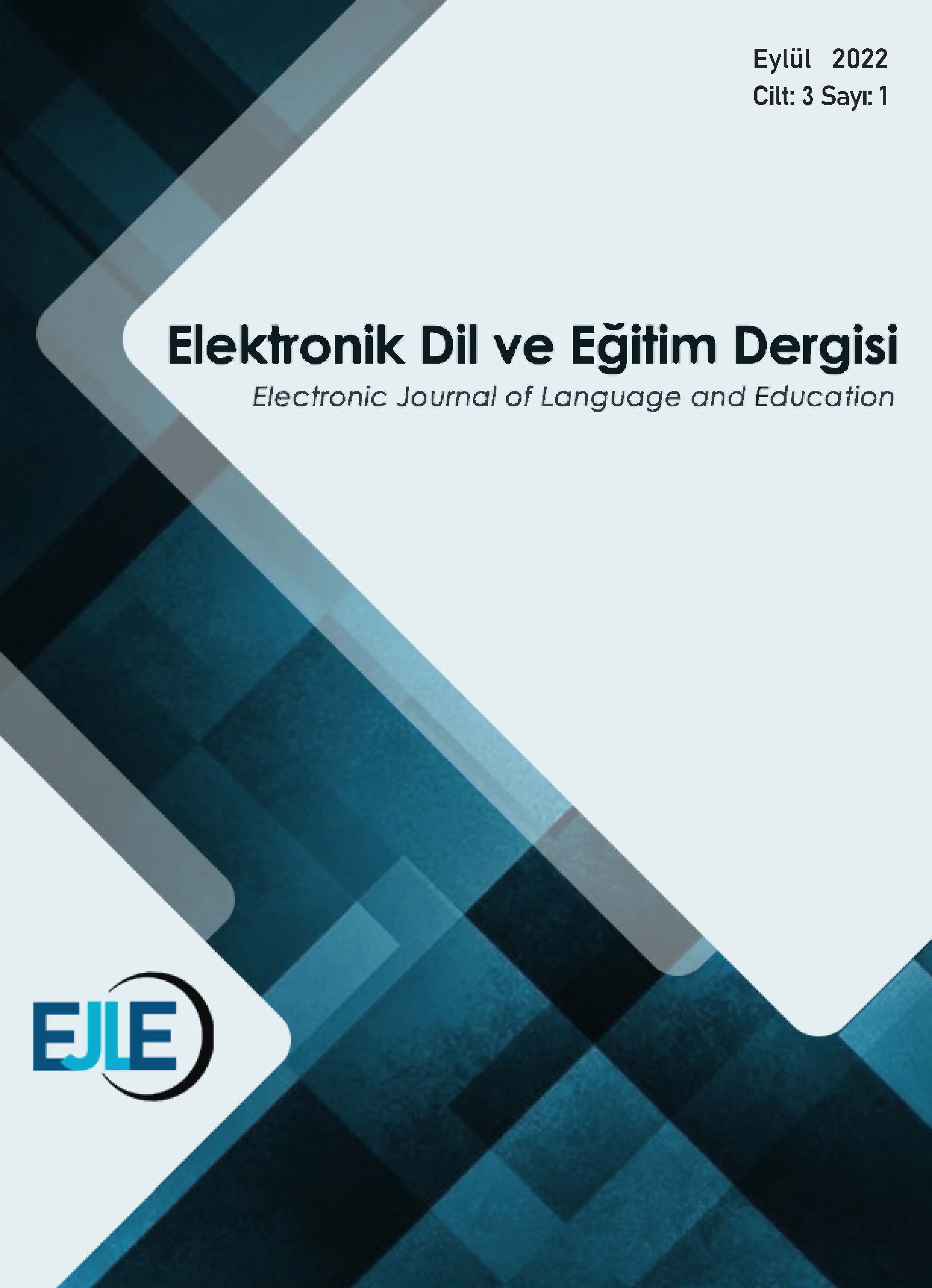Author :
Abstract
Bu çalışmada ülkelerin akran zorbalığına bakış açısına göre kümelenmesi amaçlanmıştır. Akran zorbalığı çeşitli kademelerdeki bireylerin fiziksel, duygusal ve psikolojik olarak baskı altına alınması durumudur. Akran zorbalığı bireyin çeşitli sebepler ile başvurduğu ve karşısındaki bireyin iyi niyetini kullanma ve sömürmesi olarak literatüre geçmiştir. Çalışmada betimsel tarama modeli kullanılmış ve verilerin çözümlenmesi için kümeleme analizi uygulanmıştır. Bu çalışmada aşamalı kümeleme analizi yöntemlerinden gruplar arası ortalama bağıntı yöntemi ile en sık kullanılan uzaklık ölçülerinden öklid ve chebycev ölçüleri kullanılmıştır. Veriler güncel OECDSTATS veri tabanı üzerinden alınmıştır. Ülke seçimine OECD ülkelerinin yanı sıra genç nüfusun yoğun olduğu ülkelerden Arjantin, Brezilya, Çin, Endonezya, Rusya ve Suudi Arabistan’da dahil edilmiştir. Dünya ülkelerinin hepsini kapsayan bir akran zorbalığı tutumu çalışması yapılması gelişmemiş ülkeler için veri toplanması son derece güç olduğu için çalışmanın OECD ve gelişmiş bazı ülkelerde sınırlandırılmasına sebep olmuştur. Yapılan kümeleme analiz sonucunda, sosyoekonomik düzeyi diğerlerine göre daha gelişmiş ülkeler akran zorbalığına bakış açısı sınıflamasında genellikle aynı grupta yer alırken sosyoekonomik düzeyi düşük ülkeler genellikle ayrı grupta kümelenmiştir. Çalışma sonucunda oluşan kümelerden, birinci küme genellikle gelişmiş ülkeleri, ikinci küme genellikle gelişmekte olan ülkeleri ve üçüncü küme genellikle az gelişmiş ve toplumsal olarak daha izole kültürlere sahip olan ülkelerden gruplandığı görülmüştür. Elde edilen sonuçlara göre akran zorbalığına yönelik tutumlar incelendiğinde, sosyoekonomik ve kültürel çeşitli sebepler ile ülkelerin kümelendiği yorumu yapılabilmektedir.
Keywords
Abstract
In this study, it is aimed to cluster the countries according to the perspective of peer bullying. Bullying is a situation where individuals at various levels of age are put under physical, emotional and psychological pressure. Peer bullying has been written in the literature as exploitation of the goodwill of the other individual against because of various reasons. In the study, descriptive model was used and clustering analysis was applied to analyze the data. Commonly used, Euclidean and chebycev distance measures and one of the most known progressive clustering analysis method; The mean correlation method between groups, were used in this study. Data are taken from the current OECDSTATS database. In addition to OECD countries, Argentina, Brazil, China, Indonesia, Russia and Saudi Arabia, which are among the countries with a high young population, are included in the country selection. Conducting a study on the attitude of bullying that covers all the countries of the world has caused the study to be it is extremely difficult to collect data for underdeveloped countries so that this study is limited in OECD and some developed countries instead of all the countries of the world. As a result of the clustering analysis, countries with more developed socioeconomic level than others are generally in the same group in the classification of peer bullying perspective, while countries with low socioeconomic level are generally clustered in a separate group. As a result of the study, it was seen that the first cluster was generally grouped from developed countries, the second cluster was generally grouped from developing countries, and the third cluster was generally grouped from underdeveloped and more socially isolated countries. According to the results obtained, When the attitudes towards peer bullying are examined, it can be interpreted that the countries are clustered because of their various socioeconomic and cultural positions.
Keywords
- Alpar, R. (2003). Uygulamalı çok değişkenli istatistiksel yöntemlere giriş I. Ankara: Nobel Yayınevi.
- Blashfield, R. K. ve Aldenferder, M. S. (1978). The literature on cluster analysis. Multivariate Behavioral Research. 13, 271-295.
- Crick, N. R. ve Grotper, J. K. (1995). Relational aggression, gender, and social-psychological adjustment. Society for Research in Child Development, 66(3), 710-722.
- Eliot, M., Cornell, D., Gregory, A. ve Fan, X. (2010). Supportive school climate and student willingness to seek help for bullying and threats of violence. Journal of School Psychology, 48(6), 533-553.
- Genç, G. (2007). Genel liselerde akran zorbalığı ve yönetimi. (Yayınlanmamış doktora tezi) Malatya: İnönü Üniversitesi Sosyal Bilimler Enstitüsü.
- Gürhan, N. (2017). Her yönü ile akran zorbalığı. Türkiye Klinikleri, 3(2), 175-181.
- Karasar, N. (2008). Bilimsel araştırma yöntemleri. Nobel Yayıncılık: Ankara.
- Kartal, H. ve Bilgin, A. (2007). İlköğretim öğrencilerine yönelik bir zorbalık karşıtı program uygulaması: Okulu zorbalıktan arındırma programı. Eğitimde Kuram ve Uygulama, 3(2), 207-227.
- Olweus, D. (1994). Annotation: Bullying at school: Basic facts and effects of a school based intervention program. Child Psychology and Psychiatry , 35(7), 1171-1190.
- Pişkin, M. ve Ayas, T. (2005). Zorba ve kurban lise öğrencilerinin utangaçlık, içedönüklük, dışadönüklük ve özsaygı değişkenleri bakımından incelenmesi. VIII. Ulusal Psikolojik Danışma ve Rehberlik Kongresi (21-23 Eylül). İstanbul.
- Siyez, D. M. ve Kaya, A. (2011). Akran zorbalığı gruplarında empatik eğilim. İnönü Üniversitesi Eğitim Fakültesi Dergisi, 12(2), 23-43.
- Uysal, H. ve Dinçer, Ç. (2012). Okul öncesi dönemde akran zorbalığı. Kuramsal Eğitimbilim Dergisi, 5(4), 468-483.
- Yurtal, F. ve Cenkseven, F. (2005). İlköğretim okullarında zorbalığın incelenmesi 1. Şiddet ve Okul: Okul ve Çevresinde Çocuğa Yönelik Şiddet ve Alınabilecek Tedbirler Uluslararası Katılımlı Sempozyumu, İstanbul.
- Yurtal, F. ve Cenkseven, F. (2007). İlköğretim okullarında zorbalığın yaygınlığı ve doğası. Kuram ve Uygulamada Eğitim Yönetimi Dergisi, 28, 1-13.





